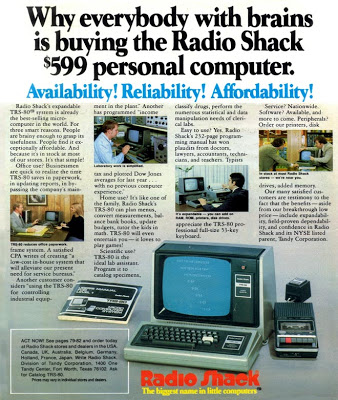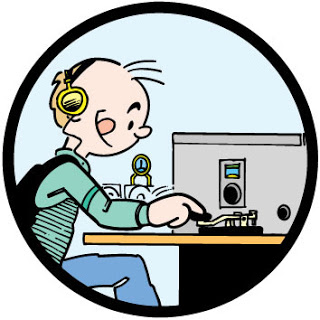Samuel Morse was born 219 years ago. But of course credit for devising the code that bears Morse’s name goes to his assistant (machinist & inventor) Alfred Vail. His birthday is 25th September 1807.

Samuel Morse was born 219 years ago. But of course credit for devising the code that bears Morse’s name goes to his assistant (machinist & inventor) Alfred Vail. His birthday is 25th September 1807.

Today is International Marconi Day. He was born on this day in 1874 in Bologna.

Hot science news of the day is the series of startling close-up images of the sun in full roar. ABC Science has a story with local scientific analysis of the unprecedented pix provided by the Solar Dynamics Observatory which was only launched on 11 Feb this year. A comprehensive set of images and downloadable video clips is at Watts Up With That?

The SDO’s five year mission has got off to a brilliant start. Some of the images and video captured a coronal mass ejection from an amazingly close observation point!
An article appeared on the WIRED site recently about the re-branding of RadioShack, a mirror of the same change happening to Australia’s iconic Dick Smith Electronics stores. The subtitle sums it up: ‘Tinkerers Search for New Spiritual Home’.
” The new bosses want to turn RadioShack into a hipper, more mainstream place for “mobility” — which is what they insist on calling the cell phone market. (In an interview, RadioShack’s marketing chief used the word mobility an average of once every 105 seconds.) Selling phones is central to the new RadioShack. And so far, it seems to be working. Per-store sales are up, and corporate profits jumped 26 percent in the fourth quarter of 2009.”
The article identifies ‘a small subculture of RadioShack nostalgics’ and their feelings of betrayal and loss. The author asserts that
“in a single generation, the American who built, repaired, and tinkered with technology has evolved into an entirely new species: the American who prefers to slip that technology out of his pocket and show off its killer apps. Once, we were makers. Now most of us are users.”
It sketches the history of the brand, the importance of the high profit margin and how in a way the introduction of the TRS-80 the first mass-produced PC was the beginning of the end for the DIY mission of owner Charles Tandy. The up to 500% markup of tiny electronic components has been replaced by the cell phone which is “like a tiny slot machine that pays off month after month.”

In Australia the Tandy chain was established in 1973 and finally purchased by Woolworths in 2001. Woolworths also own Tandy’s one-time competitor Dick Smith Electronics (fully owned as of 1982). In 2009 Tandy stores began morphing into DSE outlets. Jaycar now remains as the most likely place to purchase electronic bits and pieces, with a wide network of stores across the country. Hunting down rarer semiconductors, components like toroids, hardware and even wire is often easier via US speciality suppliers like ‘The Wireman’ etc.
I’ve had my Wouxun KG-UVD1P for a few weeks. I ordered it from a Hong Kong based dealer for US$105! I also ordered a USB programming cable. The radio works well and has a very pleasant audio to listen to. However I was never able to get the original progrmming cable to work. I tried every possible way, on three different PCs and even on a Mac pretending to be a PC(!). I finally contacted the dealer who suggested sending it back to HK for a check. The airmail was probably three times the cost of the cable. In any case now a couple of weeks later, I’ve just received a new cable and best of all – it actually worked first go! Thank you to Radioshop888!

My radio works on 2m and 70cm. In fact the frequency range is quite wide, taking in UHF CB and Marine frequencies: 136-174 and 400-480Mhz. As the Wikipedia sourced photo indicates other ranges are available for other markets.
The design and finish is probably short of the big firms, but for me it’s easier to use than my Yaesu VX-7R even though it’s a bit fatter. It feels like a radio you’d readily grab and use. You don’t need to spend a few nights of your life getting orientated to the device’s view of the world. (That’s probably just as well given the brevity of the Wouxun’s guide). The battery is holding a charge well and all accessories including a spare battery are cheap. Full retail Yaesu replacement battery are almost what I paid for the Wouxun. I surprised how well the little 7″ (18cm) whip works.

Fantastic approach:
“You can copy 25 wpm in three weeks, with just 15 min a day practice. Start at 35 and work down… You listen, and listen some more. Use the W1AW practice run that starts at 35 wpm. After a few weeks, 25 wpm will sound slow, and you should be able to write the characters.”
Ron on the CW list describing how he broke through his own plateau. Extreme Farnsworth.

Kristen Haring’s book “Ham Radio’s Technical Culture” is a fascinating coverage of an activity that gets precious little coverage in the mainstream.
“”Although approximately one million Americans operated ham radios in the course of the 20th century, very little has been written about this thriving technical culture in our midst. Kristen Haring offers a deeply sympathetic history of this under-appreciated technical community and their role in contributing to American advances in science and technology, especially the electronics industry. In the process she reveals how technical tinkering has defined manhood in the United States and has powerfully constituted ‘technical identities’ with often utopian, even, at times, revolutionary, notions about the social uses of technology.”
Susan Douglas, Catherine Neafie Kellogg Professor of Communication Studies, University of Michigan, and author of “Listening In: Radio and the American Imagination”
Quote of the Day from David N1EA in an exchange on the CW list about the merits of a CW newbie starting with a straight key or jumping straight onto a bug or paddle:
“A paddle and speed key in the hand of someone who has no feel for Morse sounds pretty ugly when they start sending with no spaces or extra dots and dashes. Kind of like running a rotary floor buffer the first time!”
David argues “with a straight key – especially on the lower frequencies – 1.8, 3,5 and 7.0 MHz – you can customize your sending to match the conditions. Sometimes sending “fatter” dashes gets the message through.”
Another adds:
“…do yourself a favor, and learn with a straight key. Learning to be proficient in sending and receiving “good” code, is not magic. It takes a little dedication, and lots of practice on a regular basis. Check out youtube and you will see more than one “cw op” who thinks he is the cat’s meow on a bug or paddle, little does he know that what he is sending is considered “poop fist” material. By learning slowly with a hand key, you will learn proper spacing between characters and words. When you get to the point where you can set the gap on your hand key at a “hairs width” and send with it perfectly at 15 to 20 wpm, you might then give a paddle a try.”
Congratulations to Julian G4ILO! He managed to hear EME signals with his FT-817 and a homebrew antenna.
Read all about it here and hear the signals.
Also interesting side stories about RFI sources and soundcards & recording audio off-air.
I’ve only just discovered K3WWP’s CW and QRP site via NW7US’ http://cw.hfradio.org/.
Amazed at the continuous record of publishing online since 1996 and the simple but powerful commitment to have at least one CW QRP QSO every day (a little like the necessary resolution of any half serious blogger!). What a model!
And what a wealth of good info there is online for the CW and QRP fan. Which makes the challenge of actually getting on the air and operating even greater!
This is a great US$15 value! Only downside I can see so far is that after reading it you come out with a new wishlist of Buddipole accessories such as the 9.5ft whips, the shockcord mast, the longest shockcord whip and other bits and pieces.

Scott is great at explaining the most efficient ways to use the Buddipole system. Along the way you learn a lot about the behaviour of small HF antennas at low heights and this informs the configurations most likely to succeed in QSOs.
While some of the info may already be available via the files on the BUG list site, the book pulls it all together and presents it so you have a clear idea of how it’s likely to perform. Some of the 10/12m beams and the VHF beams look very interesting. And further reason to hit the Buddipole accessories page which is another place you can order the book. It’s also available as a free download – in added colour – from the BUG Yahoo group page but if you’re like me you’ll find the printed book a useful companion.
Scott is also active on the BUG fielding queries about the book and the Buddipole system. He brings a time-saving degree of order and logic to using the Buddipole. And the book is very practical. The info he presents helps you decide whether to deploy the Buddipole or try a dipole high in a tree – assuming the location offers you that choice. There’s a wealth of information about how best to use the Buddipole and the Buddistick as verticals. And no surprises here – more metal and fewer turns of coil loading needed, yield a bigger useable bandwidth.
Now I’m hunting for some basic info about how best to use my new MFJ-269 Antenna Analyser with the Buddipole. Youtube, here I come!
Via the new SDR list heard about RV3APM’s page listing a very wide range of ‘Windows software via Soundcard’. It’s a comprehensive, detailed and at the moment very up-to-date listing.
Also includes handy information about frequencies for different modes, discussion groups and other background info about soundcard modes.
I wonder if there’s a comparable listing of Mac applications… But that’s probably this page!